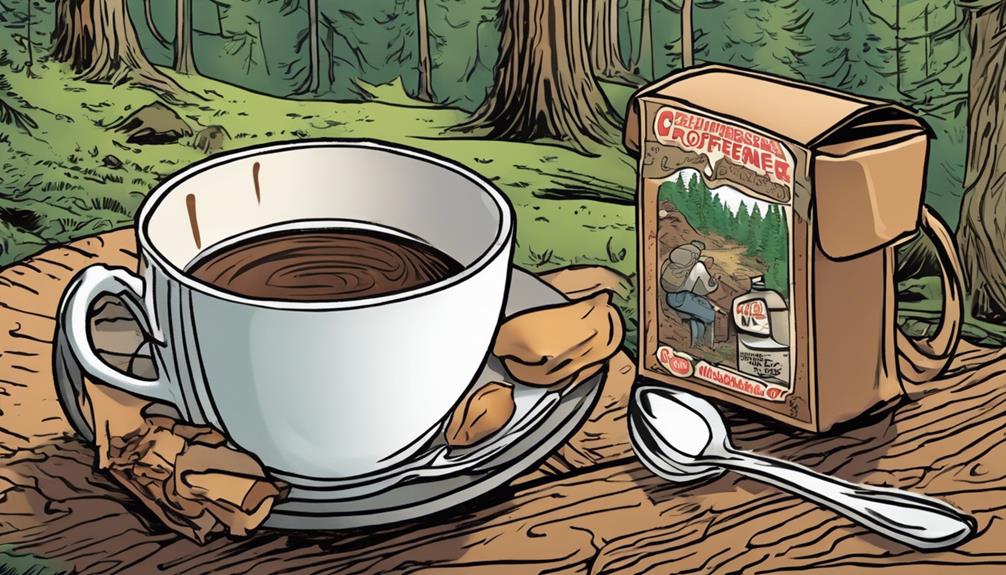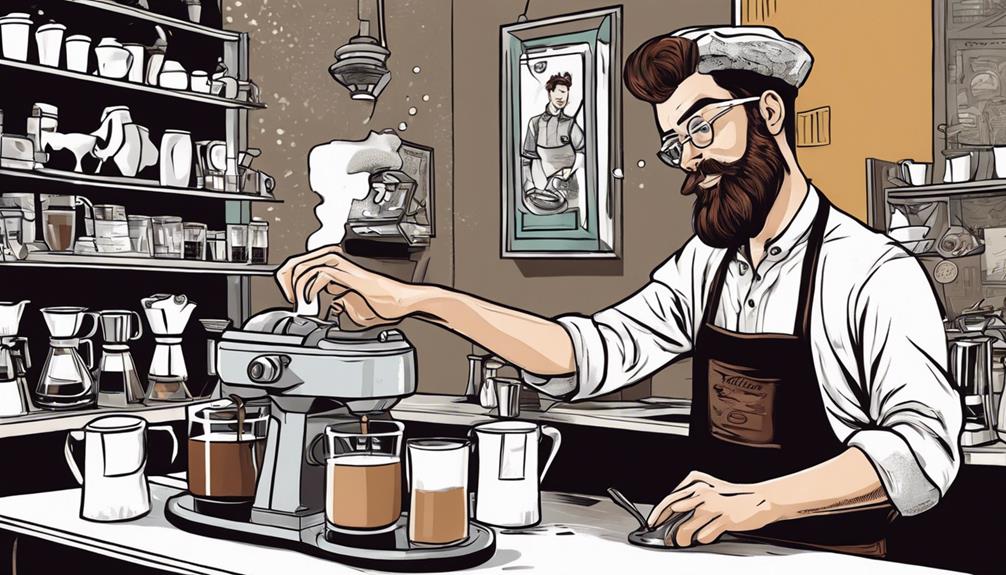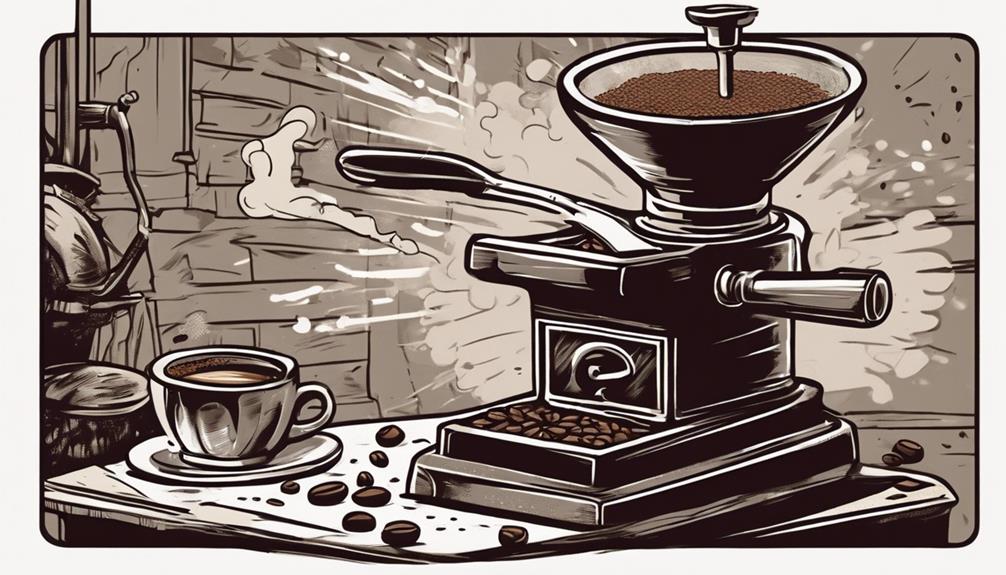To ensure your coffee remains free of mold, begin by selecting high-quality beans. Keep them stored in a cool, dry area and make sure to clean your equipment regularly. Visual inspect the beans for any signs of mold before brewing. Opt for regular coffee over decaf to lower your risk of exposure. By following these easy steps, you can enjoy a mold-free coffee experience each day.
Key Takeaways
- Purchase high-quality, specialty coffee beans.
- Clean and disinfect coffee equipment regularly.
- Store coffee beans in a cool, dark, dry place.
- Visually inspect beans for mold before brewing.
- Opt for regular coffee over decaf or cheaper blends.
Understanding Mold in Coffee
Understanding the presence of mold in coffee starts with recognizing that poor storage, processing, or harvesting practices can be the root cause. Mold, a type of fungus, can develop on coffee beans if they're exposed to excess moisture and warmth during storage or processing. This mold can produce harmful mycotoxins such as Aflatoxin B1 and Ochratoxin A, which pose risks to both the quality and health aspects of the coffee.
To prevent mold contamination, it's vital to ensure that coffee beans are stored in dry, cool conditions and processed in a clean environment. Green coffee beans are particularly susceptible to mold growth due to their high moisture content, making proper handling essential.
While roasting coffee beans can help reduce mold levels, it may not completely eliminate them. Thus, it's important to prioritize good manufacturing practices to maintain the quality and safety of the coffee beans. Regular monitoring and quality control measures are necessary to safeguard against mold contamination and mycotoxin formation in coffee.
Mycotoxin Concerns & Detection
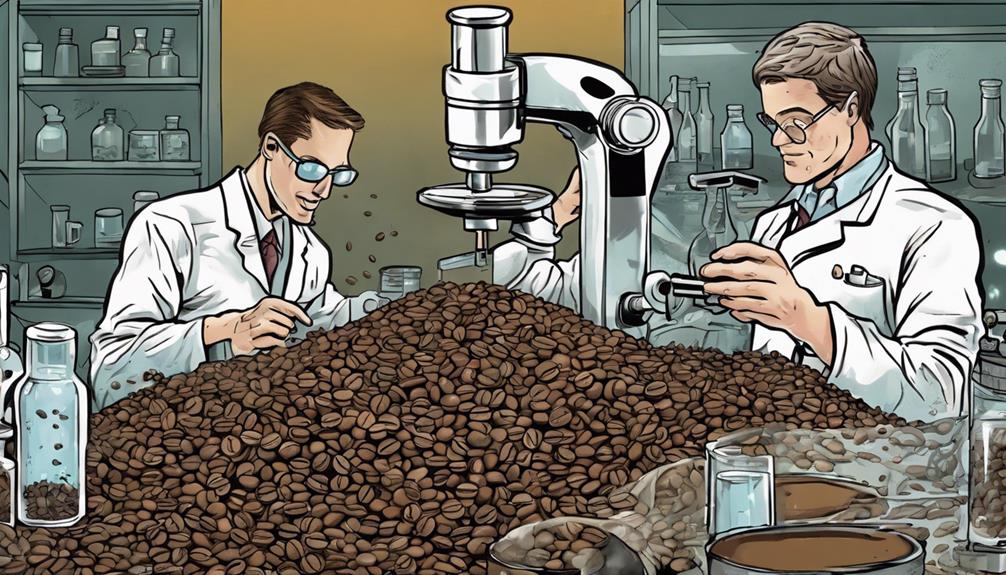
You should be aware of the potential presence of mycotoxins in coffee, as they're harmful substances released by mold and fungi.
Opting for specialty coffee with high cupping scores can diminish the risk of mycotoxin contamination.
Remember that lab testing is essential to guarantee your coffee is free of impurities like mycotoxins.
Mycotoxin Detection Methods
Using specialized lab testing is essential for accurately detecting mycotoxins in coffee, as visual inspection alone is insufficient for identifying their presence. To ensure the coffee you consume is free from harmful mycotoxins, opt for specialty coffee brands with high cupping scores. These brands are known for their rigorous testing processes, reducing the chances of mycotoxin contamination. Additionally, supporting regenerative farming practices can lower the risk of mycotoxins in coffee production, as these methods promote healthier growing conditions. Although studies on chronic low-dose mycotoxin consumption are limited, it's crucial to prioritize monitoring and testing to safeguard your health. When choosing your coffee, consider opting for organic or biodynamically grown options as they are cleaner and healthier alternatives, offering a safer choice to avoid mycotoxins.
| Mycotoxin Detection Methods | ||
|---|---|---|
| Lab Testing | Specialty Coffee Brands | Regenerative Farming |
| Accurate detection | High cupping scores | Healthier growing |
| Essential for safety | Rigorous testing | Reduced risks |
Specialty Coffee Importance
Specialty coffee plays an important role in minimizing mycotoxin exposure due to its higher likelihood of being free from harmful contaminants. Coffee beans with high cupping scores are indicative of superior quality and are less likely to harbor mycotoxins, ensuring a safer brew.
The adoption of regenerative farming and biodynamic practices in specialty coffee cultivation further reduces mycotoxin risks by promoting soil health and biodiversity, resulting in toxin-free beans.
While visual inspection of coffee beans may not reveal the presence of mycotoxins, lab testing is essential to confirm their absence in the final product. Opting for organic or biodynamically grown specialty coffee guarantees a cleaner and healthier choice, minimizing mycotoxin exposure and supporting healthy farming practices.
Health Risks and Symptoms
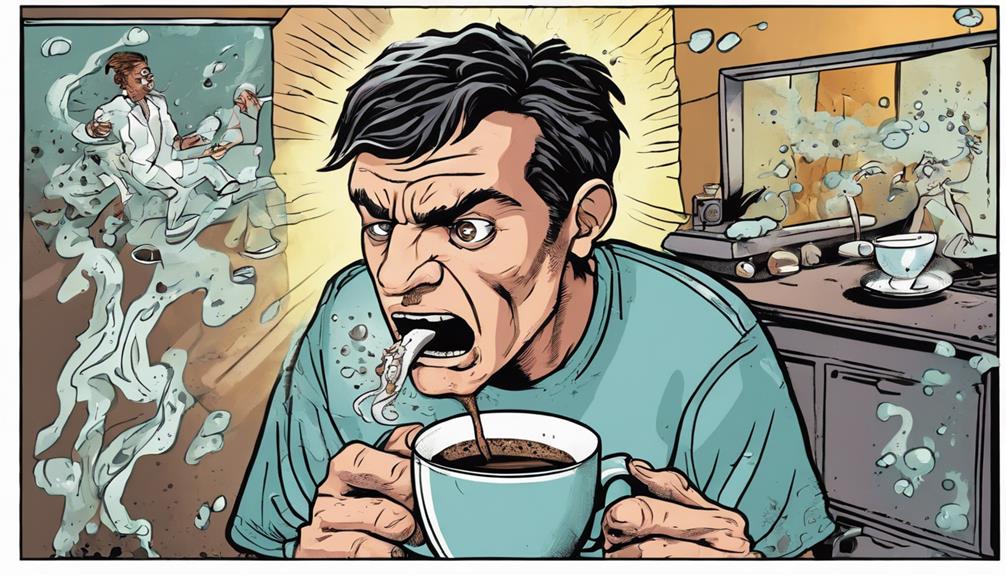
Exposure to mold in coffee can lead to various symptoms, including upset stomach, fatigue, and altered taste. Beyond minor discomfort, ingesting mycotoxins from moldy coffee can pose serious health risks, especially with long-term exposure.
While some symptoms like nausea or headaches may be mild, heavy mold exposure in coffee can result in more severe health issues. It's important to note that mycotoxins in coffee may not always be visible to the naked eye, highlighting the significance of lab testing for safety.
Regularly monitoring for mold in your coffee and opting for high-quality, specialty-grade options can go a long way in preventing these health risks. By being vigilant about the quality of the coffee you consume and taking proactive steps to ensure its cleanliness, you can protect yourself against potential health hazards associated with mold exposure.
Preventing Mold in Coffee
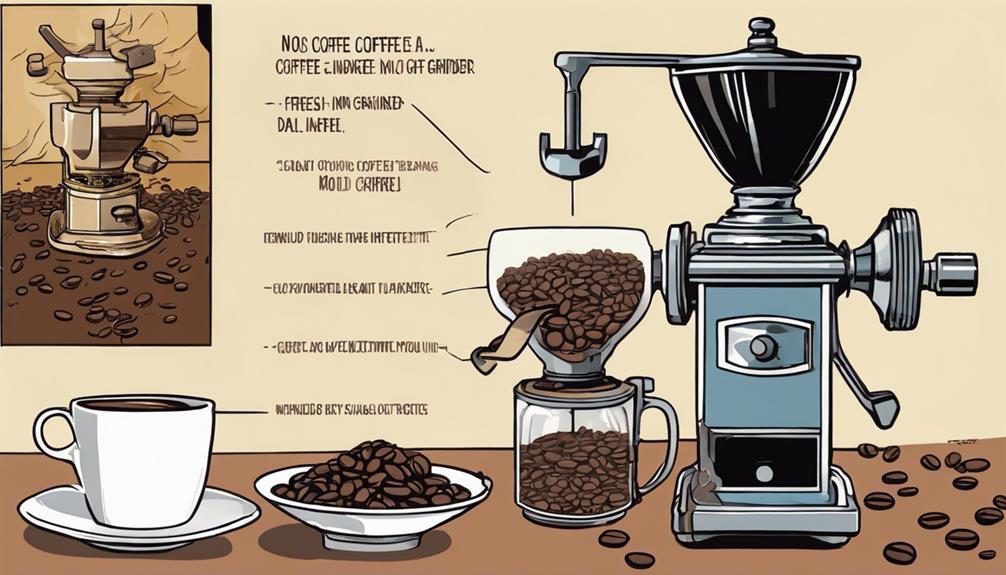
To prevent mold in your coffee, start by purchasing high-quality natural coffee beans to minimize the risk of contamination. Additionally, make sure you clean and disinfect your coffee equipment regularly to avoid mold growth. Properly storing your coffee beans in a cool, dark, and dry place can also help prevent mold from developing.
Before brewing your coffee, visually inspect the beans for any signs of mold, such as white fuzz or unusual textures. Opting for regular coffee over decaf or inexpensive blends can further reduce the chances of mold contamination.
If you detect mold on your coffee beans, it's essential to act promptly. Discard any beans that show signs of mold to prevent it from spreading to the rest of your coffee supply. For beans that have minor mold growth, you can rinse or soak them in water or vinegar to remove the mold before brewing your coffee.
Dealing With Mold in Coffee
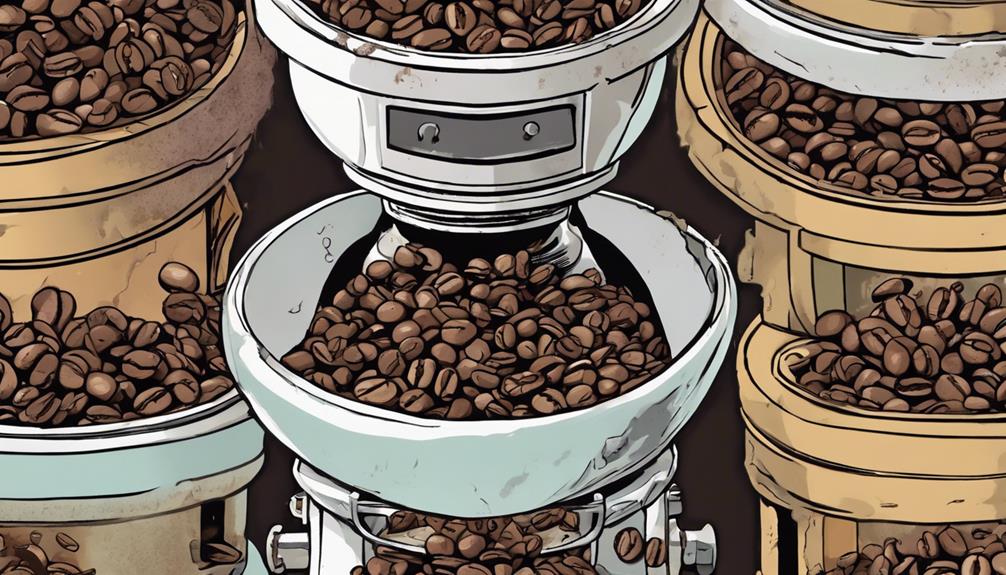
When encountering mold in your coffee beans, promptly discard any affected beans to prevent further contamination. Mold in coffee can be identified by the presence of white fuzz or unusual textures on the beans.
If you notice mold on your beans, you may consider rinsing or soaking them in water or vinegar to remove the mold. However, be aware that these methods may not completely eliminate all mold and could affect the taste of your coffee.
To prevent mold growth in the future, it's crucial to regularly clean and disinfect your coffee equipment. Properly storing your coffee beans in a cool, dry place can also help minimize the risk of mold.
Before brewing your coffee, visually inspect the beans to make sure they're free of any mold. Additionally, choosing regular coffee over decaf or cheaper blends can reduce your exposure to mold.
Choosing Quality Coffee
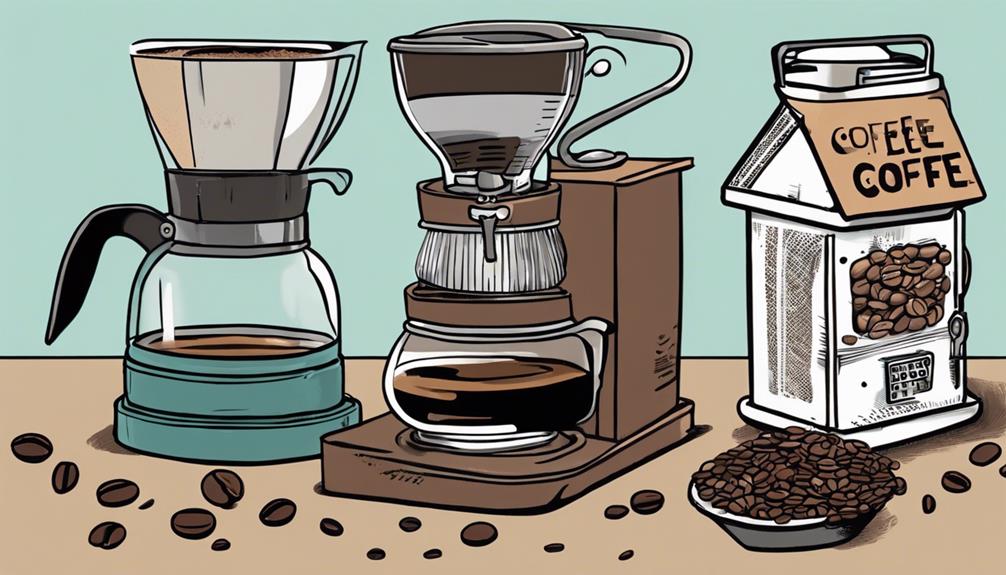
In selecting quality coffee, prioritize brands like Blue Bottle or Starbucks known for their mold-free specialty-grade options. Specialty coffee brands go through rigorous quality control processes overseen by Q Graders to guarantee they are free from defects and molds. These companies often source their beans from farms with better labor practices, contributing to the overall quality of the coffee. Additionally, specialty coffees are packaged in moisture-resistant bags, preventing mold growth and preserving freshness.
| Specialty Coffee Features | Description |
|---|---|
| Q Graders | Assess coffee quality |
| Quality Control | Guarantees mold-free products |
| Moisture-Resistant Bags | Prevent mold growth |
| Labor Practices | Better standards |
| Defects | Eliminated through checks |
Mold and Mycotoxins in Coffee
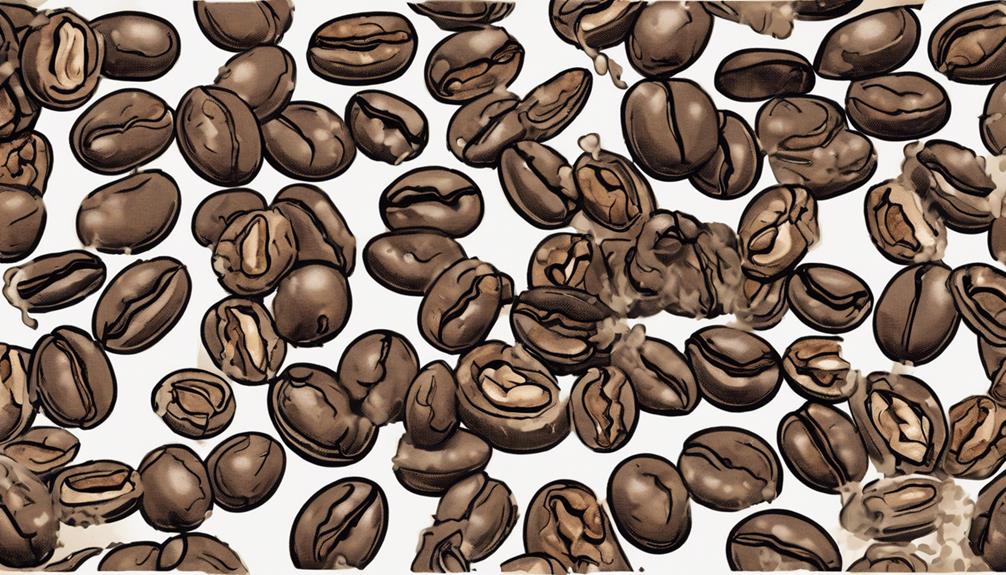
You should be aware of the common mycotoxins found in coffee and their potential health risks.
Specialty coffee is particularly important as it typically undergoes processes that reduce mycotoxin levels.
Learning about effective mold prevention strategies can help you enjoy your coffee safely.
Common Mycotoxins in Coffee
Mycotoxins commonly found in coffee, such as Aflatoxin B1 and ochratoxin A, are often a result of poor handling practices during the processing of green coffee beans. These mycotoxins are more prevalent in low-quality commodity coffees compared to specialty coffees.
When selecting your brew, opt for specialty coffee beans to reduce the risk of mycotoxin exposure. Aflatoxin B1 and ochratoxin A can also be present in other food products like nuts, grains, organ meats, and spices, emphasizing the importance of quality control in coffee production.
Interestingly, cheaper coffee blends and instant coffees are more likely to contain mycotoxins due to subpar processing and storage methods. To enjoy your cup of joe without worrying about harmful mycotoxins, make sure you choose mycotoxin-free coffee beans and prioritize high-quality coffee products to savor your daily brew worry-free.
Specialty Coffee Importance
Specialty coffee, characterized by its meticulous sourcing and quality control procedures, plays an essential role in ensuring coffee is mold-free and free from mycotoxins. Companies like Blue Bottle and Starbucks are known for offering specialty coffees that undergo rigorous quality assessments by Q Graders to detect any defects or mold presence.
By sourcing coffee from ethical farms and implementing strict quality controls, specialty coffee companies minimize the risk of mycotoxins in their products. Additionally, specialty coffees are stored in moisture-resistant packaging to prevent mold growth and maintain their quality throughout the supply chain.
These measures not only guarantee a better tasting and higher quality coffee but also provide consumers with peace of mind regarding the safety and purity of their coffee consumption. Choosing specialty coffee can hence be a reliable way to enjoy a mold-free coffee experience while supporting ethical sourcing practices in the coffee industry.
Mold Prevention Strategies
To guarantee your coffee remains free from mold and mycotoxins, implementing effective prevention strategies during storage, processing, and harvesting is essential.
Mold prevention in coffee involves careful storage in moisture-resistant bags, meticulous processing methods, and proper harvesting techniques to avoid mycotoxin contamination.
Specialty-grade coffees, which undergo stringent quality controls assessed by Q Graders, are a reliable choice to ensure mold-free products.
Companies like Blue Bottle and Starbucks prioritize offering specialty coffees sourced from farms with quality control measures, ensuring mycotoxin-free products for consumers.
Additionally, fair compensation for farmers in the specialty coffee industry leads to better quality cherries and reduces the risks of mycotoxin contamination.
Frequently Asked Questions
How to Get Mold Free Coffee?
To get mold-free coffee, choose specialty-grade options from reputable companies like Blue Bottle or Starbucks. They undergo quality assessments to guarantee they're free from defects and molds. These companies prioritize quality control for your peace of mind.
What Coffee Has the Least Amount of Mold in It?
For the coffee with the least mold, opt for specialty-grade options like Blue Bottle or Starbucks. These undergo strict quality controls, ensuring minimal mold. Seal them in moisture-resistant bags for storage. Enjoy your brew worry-free!
Is There Such a Thing as Mold Free Coffee?
Yes, there is such a thing as mold-free coffee. Specialty-grade coffees from companies like Blue Bottle and Starbucks undergo rigorous quality assessments to make sure they are mold-free and mycotoxin-free, providing you with a high-quality brew.
How to Prevent Mold in a Coffee Maker?
To prevent mold in your coffee maker, regularly clean with a water-vinegar mix, guarantee thorough drying after each use, and use filtered water. Store coffee grounds in airtight, dry containers. Consider mold-resistant equipment for added protection.
Conclusion
Next time you reach for your morning cup of coffee, remember the importance of keeping it mold-free.
Mold can easily grow in damp environments, and coffee grounds are the perfect breeding ground for it. To prevent mold growth, make sure to clean and dry your coffee maker regularly, and store your coffee grounds in an airtight container. Additionally, using coasters and wiping up spills promptly can go a long way in preventing coffee stains on surfaces. By taking these simple steps, you can enjoy your mold-free morning coffee without any worries.
Imagine the rich aroma of freshly brewed coffee filling your kitchen, free from any unwanted contaminants.
By understanding the risks, taking preventative measures, and selecting high-quality coffee, you can enjoy your daily brew without any worries.
Here's to a delicious and mold-free cup of joe!



